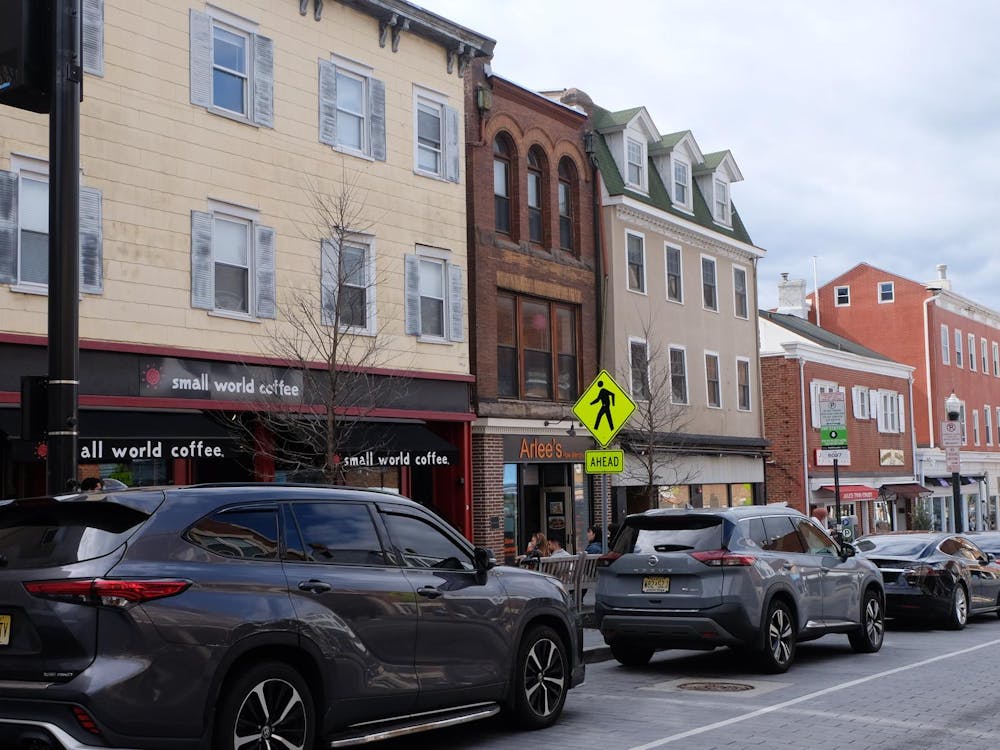Just one year after losing in the first round of the National Invitation Tournament (NIT), the men’s basketball team (22–8 overall, 10–4 Ivy League) finds themselves in the second round of the NCAA Tournament, having sent the Pac-12 champions packing in the opening round.
The 15-seed Tigers pulled off an upset for the ages yesterday against the two-seed Arizona Wildcats, winning 59–55. The two-seed versus 15-seed matchup is normally just a warmup game for the favorites: Entering Thursday’s game, the 15-seed was just 10–130 all-time in the matchup. The Tigers, therefore, became just the 11th 15-seed to ever win a March Madness game.
The usually-safe first round, however, has become more treacherous for two-seeds in recent years. Princeton’s win on Thursday marks the third consecutive year in which at least one 15-seed has won their first-round matchup. In 2021, Oral Roberts shocked the nation by beating Ohio State, and last year, Saint. Peter’s, located just 45 miles away from Princeton, overcame Kentucky 85–79 before making a run to the Elite-Eight.
Princeton will go into Saturday’s matchup against Missouri (25–9, 11–7 Southeastern) looking to become the fourth-ever 15-seed to move forward into the second weekend of the tournament, following Saint Peter’s, Oral Roberts, and Florida Gulf Coast, who became the first to do so in 2013.
Before yesterday's win over the Arizona Wildcats, the Tigers hadn’t won an NCAA tournament game since 1998, when they beat University of Nevada - Las Vegas before losing to Michigan State in the second round. Since then, the Tigers have only qualified for the tournament four times, losing all four matchups.
While bracket analysts typically project the Tigers as a first-round exit when they do make the tournament, the program has proven that when given the chance, they keep things interesting. This year's squad is no different from past teams in their ability to give a major-conference school all they can handle.
In their previous two tournament appearances in 2017 and 2011, the Tigers lost by a combined total of 4 points to Notre Dame and Kentucky, two storied programs with histories of tournament success.
Their biggest upset before yesterday came in 1996, with a win over the then-defending champion UCLA Bruins as a 13-seed. The win was the final in the storied coaching career of Pete Carril and was Princeton’s first NCAA Tournament win since the field was expanded to 64 teams in 1985.


The front page of the ‘Prince’ the day after the win over UCLA.
The Daily Princetonian archive
“The celebration was immediate, and dramatic,” an article written shortly after the game in The Daily Princetonian read. “When a Ryder truck drove through Prospect Avenue, ecstatic Tiger fans grabbed hold of the still-moving vehicle.”
“I’ve never seen so much joy on campus as the result of a sporting event,” Sean Gregory ‘98, a member of the 1996 squad, told the ‘Prince’ in 2021.
While the Tigers certainly shocked the world by knocking off the Bruins, perhaps their most significant tournament game came just seven years earlier and ended in defeat.

In 1989, four years after the tournament field increased to 64 teams, the Tigers found themselves matched up with perennial contender and NBA talent factory Georgetown Hoyas, who were led by would-be NBA Hall of Famer Alonzo Mourning.
Ahead of the 1989 tournament, NCAA representatives had discussed limiting the amount of automatic bids given out to smaller schools in smaller conferences. The initiative was spearheaded by the major conferences, who typically won most — if not all — of the tournament’s at-large bids. For them, more automatic bids meant less of their teams in the tournament, and a smaller share of the tournament's profits.
“As you prepare for it, you treat it like any other game,” Carril wrote in his 1997 book, “The Smart Take From the Strong.” “We took the psychology out of it, the idea that every team was superior … We just played the game.”
College basketball fans expected a blowout, especially given that the three previous teams that the Ivy League had sent to the tournament had lost by an average of 40 points. Ahead of the game, Pete Carril recognized just how tall the task was.
“I think we’re a billion-to-one to win the whole tournament,” he said. “To beat Georgetown, we’re only 450 million to one.”

Bob Scrabis ‘89 (34) and Kit Mueller ‘91 (00) orchestrate the offense in Princeton’s 1989 NCAA tournament game against Alonzo Mourning (33) and the Georgetown Hoyas.
Courtesy of GoPrincetonTigers.com.
But against all odds, the game came down to the wire. Princeton took the final shot with a chance to win, but fell just short and lost, 50–49. The game, however, proved to the NCAA and its fans that automatic bids can compete, and people love to watch them do so. The game drew huge TV ratings, which helped prompt CBS executives to sign a seven-year deal with the NCAA to broadcast the tournament in its entirety.
“[The game] changed the way people watched the NCAA tournament,” famed sports journalist John Saunders told Sports Illustrated. “They weren’t just watching their team. They were looking for the upset.”
34 years later, the slipper still fits, and the Tigers are once again the talk of the ball.
Diego Uribe is an assistant editor for the Sports section at the 'Prince.'
Harrison Blank is a contributor to the Sports section at the 'Prince.'
Please direct any corrections requests to corrections[at]dailyprincetonian.com.








